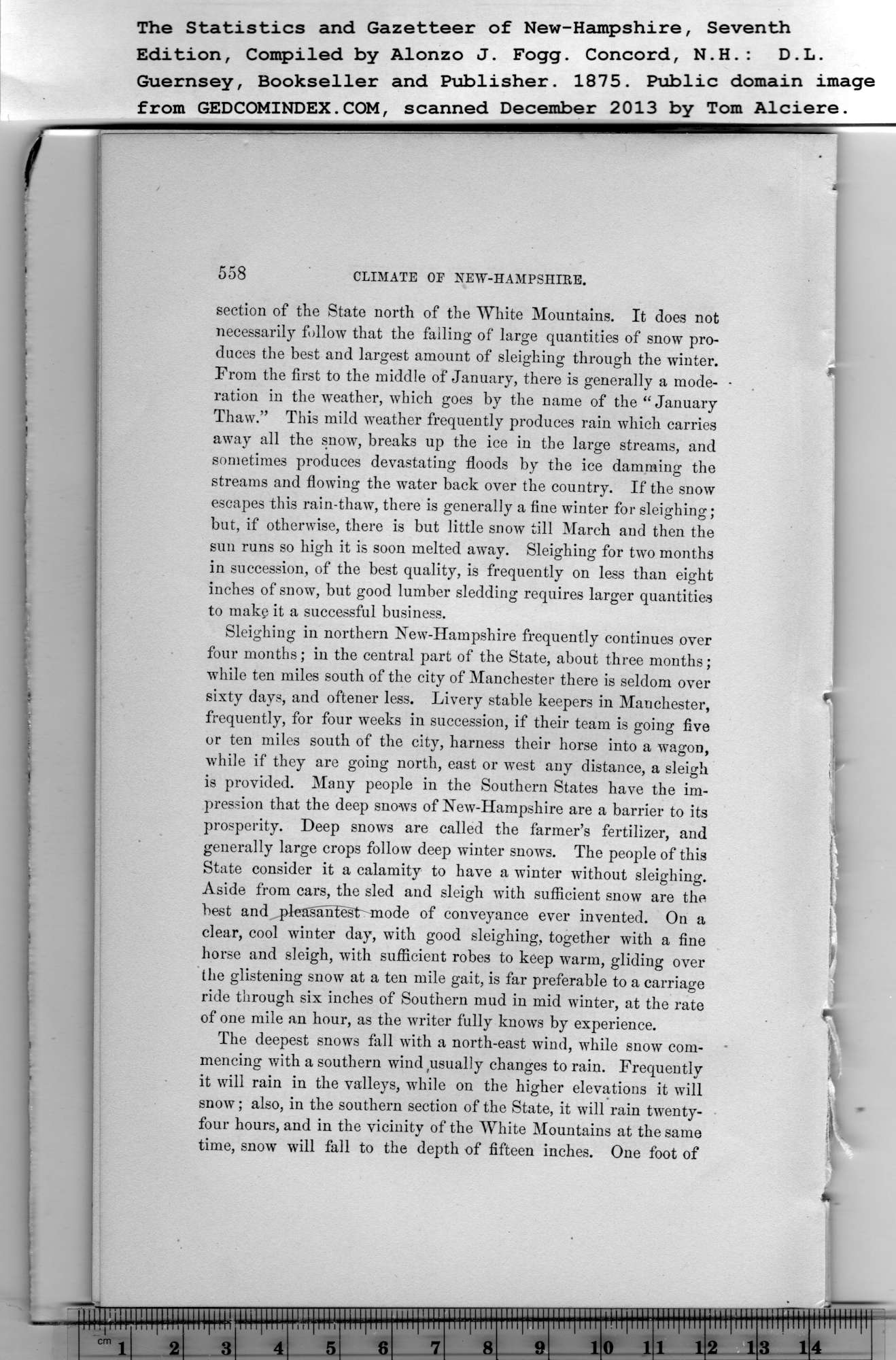|
558 CLIMATE OF NEW-HAMPSHIRE.
section of the State north of the White Mountains. It does not
necessarily follow that the falling of large quantities of snow pro-
duces the best and largest amount of sleighing through the winter.
From the first to the middle of January, there is generally a mode-
ration in the weather, which goes by the name of the “ January
Thaw.” This mild weather frequently produces rain which carries
away all the snow, breaks up the ice in the large streams, and
sometimes produces devastating floods by the ice damming the
streams and flowing the water back over the country. If the snow
escapes this rain-thaw, there is generally a fine winter for sleighing;
but, if otherwise, there is but little snow till March and then the
sun runs so high it is soon melted away. Sleighing for two months
in succession, of the best quality, is frequently on less than eight
inches of snow, but good lumber sledding requires larger quantities
to makg it a successful business.
Sleighing in northern New-Hampshire frequently continues over
four months; iu the central part of the State, about three months;
while ten miles south of the city of Manchester there is seldom over
sixty days, and oftener less. Livery stable keepers in Manchester,
frequently, for four weeks in succession, if their team is going five
or ten miles south of the city, harness their horse into a wagon,
while if they are going north, east or west any distance, a sleigh
is provided. Many people iu the Southern States have the im-
pression that the deep snows of New-Hampshire are a barrier to its
prosperity. Deep snows are called the farmer’s fertilizer, and
generally large crops follow deep winter snows. The people of this
State consider it a calamity to have a winter without sleighing.
Aside from cars, the sled and sleigh with sufficient snow are the
hest and ypleasanfestr mode of conveyance ever invented. On a
clear, cool winter day, with good sleighing, together with a fine
horse and sleigh, with sufficient robes to keep warm, gliding over
the glistening snow at a ten mile gait, is far preferable to a carriage
ride through six inches of Southern mud in mid winter, at the rate
of one mile an hour, as the writer fully knows by experience.
The deepest snows fall with a north-east wind, while snow com-
mencing with a southern wind usually changes to rain. Frequentlv
it will rain in the valleys, while on the higher elevations it will
snow; also, in the southern section of the State, it will rain twenty-
four hours, and in the vicinity of the White Mountains at the same
time, snow will fall to the depth of fifteen inches. One foot of
PREVIOUS PAGE ... NEXT PAGE
This page was written in HTML using a program written in Python 3.2
|
